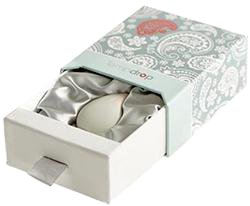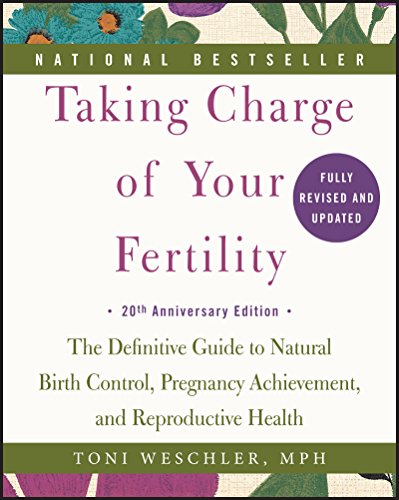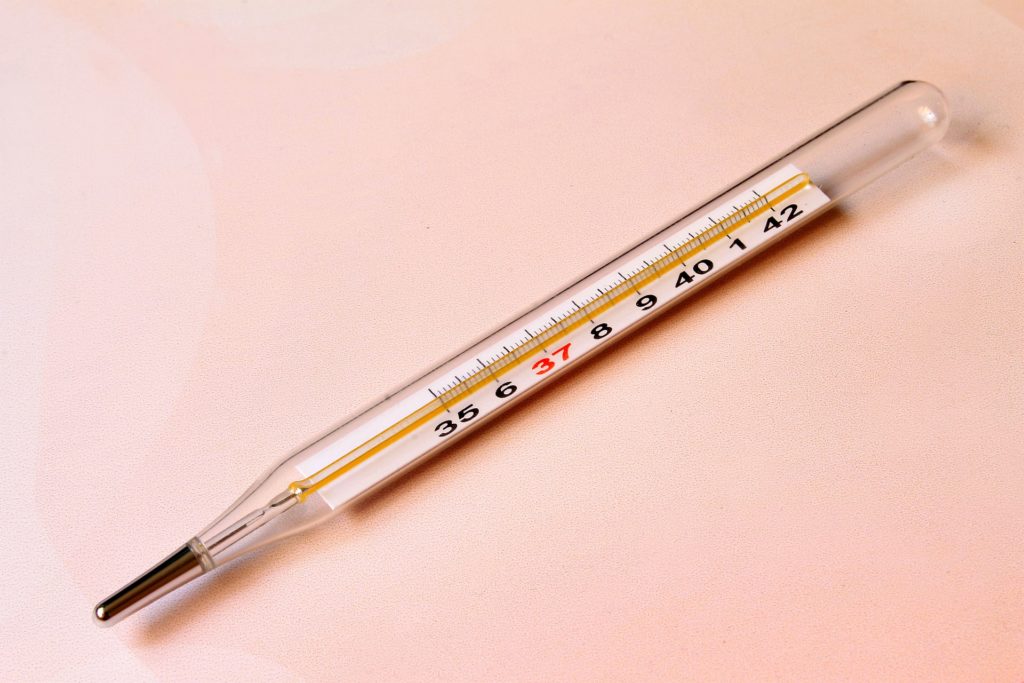Years ago I broke up with my birth control in favor of natural family planning. Read on to learn how to use natural family planning and for a TempDrop coupon code. (TempDrop is a wearable fertility tracker that can make the process much easier.)
Natural family planning is an amazing method of being in tune with your cycles so that you know when you are and aren’t fertile. It’s effective for timing sex if you’re trying to get pregnant–but it’s also effective for natural birth control.
You do have to track some pretty specific pieces of data. When I first started, I was charting everything by hand on paper. (Now, of course, there’s an app for that. Because of course there is.)
After giving birth to baby #1, though, it got a heck of a lot harder to get the data I needed. Getting at least 3 hours of sleep in a row before taking a morning temperature? When I’m up at all hours of the night with an infant? Not. Happening.
Waking up at the same time every morning for that temperature? No way am I setting an alarm when I’m trying to squeeze every last drop of sleep out of the night. (See above about how many hours of sleep you get with an infant.)
Then I learned about a really cool piece of technology that totally eliminates the need for consistent sleep patterns. Enter the

I’m so excited about the reviews I’ve seen for this product and how amazing the technology sounds.
Let’s talk a bit first about what natural family planning is and how it works, and then I’ll fill you in on this nifty fertility tracking gadget that I can’t wait to get my hands on.
My Story, or “Why I Chose Natural Family Planning”
When I first started my menstrual cycle around 12 years old, I had pretty textbook 28-day cycles.
Then, at 18, I did something life changing (and not in a good way). I moved in with my then-boyfriend and started hormonal birth control. Every 3 months, I would go to the local Planned Parenthood and get a shot that would keep me period free and baby free for the next 3 months.
Because of my fairly “crunchy” upbringing, I could have guessed that injecting myself with hormones was not the smartest tactic. But it seemed like the best option at the time.
One year later, the boyfriend broke up with me; I had my “Come to Jesus” experience, and I resolved that the next time I had sex would be my wedding night.
A hormonal shift
So over the next 6 years as I went to college and figured out where I was going in life, I also left my periods to do their thing. And I started to notice something strange. I had long and heavy periods that started to get really close together.
At first it was just annoying to have 25- or 24- or even 23-day cycles, but I began to wonder if maybe there was something to be concerned about.
But anytime I brought it up at my yearly checkup (OK, let’s be honest, it probably was less frequently than yearly…), the doctor never seemed concerned. In fact, the doctor who prescribed me the Pill just before my husband and I were married in 2010 said, “Oh, well, you’ll like this then. It will make your cycles longer.”
To me that sounded strange. I mean, if I have a short menstrual cycle, how does taking a pill that induces an artificial cycle make that better? It seemed like we were just covering up the problem.
I was on the Pill for the first year of marriage, but something about it just never sat right with me. I didn’t feel quite like myself and hated that I was putting synthetic hormones into my body every single day.
Turns out my experience is not unusual. Hormone imbalance is so common today.
Alissa Vitti, author of WomanCode, says,
Over twenty million women suffer from polycystic ovary syndrome (PCOS), fibroids, endometriosis, painful/difficult/heavy periods, and thyroid and adrenal issues. . . .
One in nine women suffers from PCOS.
Fibroids occur in three out of every ten women over the age of thirty-five, though women in their twenties can have them, too.
About one in ten, or over eight million, U.S. women have endometriosis (176 million globally).
Thirteen million Americans have underactive thyroid function [such as Hashimoto’s], only half of whom have been correctly diagnosed. Women are five times more likely than men to be diagnosed with hypothyroidism.
One in eight couples is infertile.
Fibrocystic breasts affect 20 to 40 percent of menstruating women.
But at the time my husband and I were both in grad school with a work obligation after we graduated, and we were just not prepared for the responsibility of a child. It felt like we didn’t have any other practical options.
And Then I Discovered Natural Family Planning
One evening, on a whim, I did a Google search for “natural birth control.” I thought I might turn up some herb or something. But I was sure I wouldn’t find much of anything useful.
That simple search opened my eyes. I discovered Fertility Awareness Method (FAM)/Natural Family Planning (NFP). Who would have thought that my body gives clear, recognizable signs, of ovulation, of an impending period… Every. Single. Month.
I did a ton of research online and then bought Toni Weschler’s Taking Charge Of Your Fertility and couldn’t put it down. I even read it on an airplane, which was slightly embarrassing… but I was so fascinated and awestruck by the wonder of the female body.

If you don’t have that book yet, I highly recommend it. It is the definitive guide on all things natural family planning/fertility awareness method and absolutely worth a read.
I felt powerful armed with my new knowledge. I even felt a little angry that no one had ever taught me (or anyone I knew) the secrets of the menstrual cycle.
The month of our first anniversary, with much fear about this new world we were entering (would I read my signs correctly? Would it really work?), I stopped taking the Pill and started charting my cycles.
And something really cool happened. Not only was I able to recognize when I was fertile so we could avoid pregnancy, but I also discovered why I had suddenly developed a short menstrual cycle all those years back.
I was finally able to pinpoint a short luteal phase (the phase between ovulation and the start of your period) and low progesterone.
While it was exciting to have this new knowledge, it was also frightening. My husband and I wanted kids, but low progesterone is linked to miscarriage.
I began reading everything I could get my hands on about correcting low progesterone. I tried several supplements and natural solutions and worked to balance my hormones naturally, but by the time we were ready to start trying, I still had a short menstrual cycle.
Love. And Loss.
We decided to try anyway, knowing the potential heartbreak… and began the most painful period of our lives together. In the span of about 6 months we lost 3 precious babies.

Lost Love by Karim MANJRA on Unsplash
While this was happening, my mother-in-law contracted a serious case of bacterial meningitis and ended up losing an eye from the infection. Then my dad was in a near-fatal bicycle accident with serious brain injury.
We felt crushed under an enormous weight. It was all so immense that I became numb and didn’t even realize how much grief I was carrying.
Shortly after we moved for my husband’s job, I finally got pregnant with our son. I took a bioidentical progesterone supplement and other natural supplements during the first trimester. And by some miracle, on September 28, 2015, I held our perfect little boy in my arms for the first time.
Why Learn Natural Family Planning/Fertility Awareness Method?
1. All-natural birth control
A huge percentage of women today use some form of hormonal birth control. For that year when I was a teenager and the first year of my marriage, I used it myself.
Sadly, most women aren’t aware of the side effects and the incredible damage synthetic hormones can do to their bodies. When I was on birth control I had no idea it could permanently affect my hormone balance.
I also didn’t know it could increase the risk of blood clots. And later when the doctors were running all kinds of tests on me to find out why I kept miscarrying, we found out I have a genetic defect that also increases my risk of blood clots. Seems like it would have been a good idea to know those details before going on the Pill!
Other risks include heart attack, stroke, breast pain, blurred vision, stomach pain, headaches, vaginal dryness, depression, long-term hormone imbalances, and our favorite (ugh)–loss of interest in sex. Don’t wanna get all awkward here, but, um, things got a lot more fun when I stopped taking the Pill. Just saying.
It bothers me–a lot–that doctors routinely prescribe birth control pills to teenagers with difficult periods instead of seeking to resolve the underlying causes.
Even non-hormonal devices, such as IUDs and spermicides, can come with potential side effects, and let’s be honest—condoms can just be annoying.
Natural family planning can be a highly effective form of natural birth control (98% effective when used correctly), completely eliminating the need for any other form of birth control, depending on what you decide to do during your fertile phase. (I’ll go into a little more detail on that in a minute.)
2. Help when trying to conceive
The cool thing about fertility awareness method is that it’s not just a natural birth control method. It’s just as useful for couples who are trying to start a family.
There’s a small window during your cycle when you’re fertile, and being able to recognize that window lets you time “things” for getting pregnant.
Additionally, if you’re experiencing infertility, tracking your cycle can give you insights into possible causes (like it did for me) and help you decide what to do to fix things.
In my husband’s and my case, once we were ready to start a family, we had no trouble making the switch from natural birth control to fertility aid, with no hormonal birth control to get out of my system. And with natural family planning/fertility awareness method we were able to identify the hormonal imbalance that was contributing to our miscarriages.
3. Mind-body connection
I firmly believe in the power of understanding the way your body works. Before I learned natural family planning, I recognized that there were certain things my body did every month, but I had no idea what they meant.
I actually thought there might be something wrong with me when I noticed the fertility signs–and I’m not the only one! I’ve read stories of women who had unnecessary medical procedures because they thought something serious was wrong, when in reality their bodies were just doing what they were programmed to do.
Once I recognized and understood my body’s natural, cyclical behaviors, I was no longer confused and frightened by something I didn’t understand. Instead, I felt awe at my body’s intricacy and gratefulness for this new knowledge.
What Is Natural Family Planning/Fertility Awareness Method?
I think it’s helpful to start by talking about what natural family planning or the fertility awareness method is not.
- Natural family planning is NOT a pill or a supplement. When you learn about your fertility, you aren’t using a product that will modify your body’s natural hormonal fluctuations to prevent pregnancy. Natural family planning helps you maintain equilibrium by working with your hormones rather than against them.
- Natural family planning is NOT the “rhythm” or “calendar” method. Some people like to dismiss natural family planning and say it doesn’t work for natural birth control. But they think it involves watching the calendar and determining the fertile phase based on past cycles. While the calendar *can* be an aspect of fertility awareness method, it doesn’t have to be!
- Natural family planning is NOT just for women with regular, consistent cycles. Because it isn’t based on past cycle data but looks at the signs specific to each individual cycle, it can be effective regardless of how regular or irregular your cycles are. Have a 28-day cycle one month and a 45-day cycle the next? No problem. You just have to know what to look for.
- Natural family planning is NOT a guessing game. You don’t have to just guess when you might be fertile. Your body really does give clear indicators when you are and aren’t fertile.
So what is natural family planning/fertility awareness method? Natural family planning involves tracking at least one (and ideally two or more) of the following signs and observing the changes each day.
- Basal body temperature
- Cervical mucus
- Cervical position and texture
- Changes in other signs, such as mood
Schools of thought
There are several schools of thought within the natural family planning/fertility awareness method world. I won’t go into a lot of detail here, but I think it’s helpful to at least be aware they exist.
The Catholic church traditionally uses the term “natural family planning.” Their approach specifies that couples who wish to avoid pregnancy must abstain from all kinds of sexual intimacy during the woman’s fertile phase.
“Fertility awareness method” is the term Toni Weschler coined in order to remove the baggage that some may associate with the Catholic church’s use of the term “natural family planning.”
Followers of this second method allow for non-intercourse intimacy or other types of natural birth control during the fertile phase for those wishing to avoid pregnancy.
How to Get Started with Natural Family Planning/Fertility Awareness Method
In order to begin using natural family planning, you’ll want to be familiar with your basal body temperature. Although it’s technically possible to chart your cycles without this sign, I think it’s the most important one. You’ll be missing vital information and may misinterpret the other signs without it.
What is basal body temperature, and how does it work?
Your basal body temperature is your body’s lowest temperature within a 24-hour period. To keep things simple, this usually means your temperature immediately when you wake up in the morning, before you get out of bed or do anything else.

Using a fertility tracker
I used to suggest buying an inexpensive basal thermometer to do this part, but I’ve since learned about a fertility tracker called the
The TempDrop is a small fertility tracker that you wear on an armband overnight. It tracks your temperature all night long for a more accurate basal body temperature. When you wake up and take off the armband, the
To make things even easier, it will also automatically sync with the OvuView fertility tracking app on Android, though you can manually enter your basal temperature into any other fertility-tracking app (or use a paper chart, if you prefer).
If you’re using the fertility tracker for natural birth control, they do recommend manually tracking with an oral thermometer for the first couple months while the device learns your patterns.
What I think is especially ingenious about this device is that it works even if you’re up multiple times a night (hello, newborn life or kids-who-get-sick-in-the-night life)! It works if you have PCOS or a weird schedule or whatever.
The hardest thing for me about keeping up with natural family planning postpartum was figuring out how to get a consistent temperature reading when I was waking up every couple hours and didn’t want to set the alarm for a specific time in the morning. (You need all the sleep the kids will let you get, amiright?)
To get $10 off the TempDrop Confidence or Freedom, use
Using a basal thermometer for natural birth control
If you would rather do things the old-fashioned way, you can still get a basal thermometer (more sensitive than a fever thermometer). This top-rated thermometer on Amazon costs less than $20.
For the sake of completeness, and for those of you who would rather not buy the
Different hormones dominate each phase of your cycle. As these hormone levels change throughout your cycle, your basal body temperature will also change slightly in response. Tracking these slight changes in body temperature will allow you to determine which phase of your cycle you are currently in.
When should I take my temperature?
Ideally, you’ll take your basal body temperature at the same time every day, preferably after at least 3 hours of sleep. Just set an alarm and take the extra minute to take your temperature before you get out of bed, take a drink of water, or give the hubs a good morning kiss.
Then you’ll record the temperature, either on a paper chart or one of the many available apps. You can find paper charts for printing at the Taking Charge of Your Fertility website. Popular fertility tracking apps include Fertility Friend, OvuView, and the official Taking Charge of Your Fertility app, OvaGraph.
Update 1/25/2019: my husband sent me this article about how period tracking apps use your personal data to show you ads, and I think it’s worth keeping this in mind if you plan to use an app to track your cycles.
How will my basal body temperature change?
1. Menstruation
The beginning of your period marks day 1 of your cycle. During menstruation, estrogen and progesterone production are at their lowest. As your body sheds the lining of your uterus, your basal body temperature will also be low, although it may sometimes be slightly higher than the phase that follows, due to leftover progesterone in your system.
2. Follicular phase
Follicle stimulating hormone (FSH) levels begin to rise during this phase, causing the egg follicles to ripen inside the ovaries.
In this phase of your cycle, estrogen is the dominant hormone. As your body prepares for ovulation until roughly the middle of your cycle, progesterone and your basal body temperature will be at their lowest.
This phase is the phase that varies in women with irregular cycles. In a “normal” 28-day cycle, ovulation happens on roughly day 14; ovulation that happens much later could indicate a hormone imbalance, such as low estrogen or low FSH, or could simply be a sign that you’re stressed out.
Our bodies have a fascinating way of delaying ovulation when they sense we may not be ready for a pregnancy! If you have consistent stress in your life, your cycles may be consistently irregular.
3. Ovulation
About 16 to 32 hours before ovulation, luteinizing hormone (LH) surges and estrogen peaks. Sometimes this causes a sudden dip in temperature just before ovulation. If you do not see this dip, however, it does not mean you haven’t ovulated.
4. Luteal Phase
The most accurate indicator of ovulation is the temperature rise that occurs AFTER ovulation. In this phase, progesterone levels rise and cause a slight rise in your body temperature of at least 0.2 degrees as your body prepares for a potential pregnancy. I like to think of it like your body turning itself into a nice warm, cozy nest to grow a baby in.
Ideally, if you are not pregnant, this phase will last approximately 10-14 days. At the end of the luteal phase, progesterone will drop, causing a drop in temperature, and your period will start. A shorter luteal phase could indicate low progesterone. If progesterone levels are too low to maintain a pregnancy, a pregnancy could end in miscarriage, like they did for us.
Temperatures and progesterone will remain high during the first trimester of pregnancy; if you see 18 high temperatures after ovulation, you are almost definitely pregnant.
How do I use my basal body temperature as natural birth control?
Did you know that sperm can survive up to 5 days inside you when the conditions are right?
Since you won’t release an egg before day 10 of your cycle, the first 5 days of your cycle are considered safe (non-fertile) days. Note that if your period lasts longer than 5 days, you may be fertile during your period. Don’t assume you can’t get pregnant on your period!
After day 5 of your cycle, having unprotected sex is a huge risk. Wait until after you can be sure you’ve already ovulated. A good rule of thumb is that ovulation has occurred when you see 3 consecutive temperatures that are least .2 degrees higher than the previous 6 temperatures. After day 3, you are considered non-fertile for the rest of your cycle.
Once you understand how the basal body temperature works, you are ready to start using it to prevent pregnancy or to conceive… and at the very least, to begin understanding your specific cycle.
Cervical Fluid and Natural Family Planning
OK, let’s get this out of the way first–this topic is a bit of an awkward one. But I guess, to be fair, the whole topic of natural family planning/fertility awareness method is a little awkward.
And since understanding cervical fluid is essential to understanding the fertility awareness method, we’re going to put on our big-girl panties (har har har) and talk about it.
Has this ever happened to you before? You’re just going about life, minding your own business, when all of a sudden, out of nowhere, you feel a gush of something wet “down there”? You’re pretty sure you still have control of your bladder, and you think it’s too early for your period, but what else could it be?
Just in case it’s blood, you rush to the bathroom, only to find there’s not much of anything there. It’s just wet.
A mystery solved
I remember this happening to me all the time as a teenager, but when I asked my mom about it, she didn’t have an answer for me. I wasn’t sure if it was normal and wondered if I was getting recurring yeast infections.
Even after I graduated from college it was still a mystery. I remember on one occasion sitting in my office at the university I was working at, talking to my office mate and suddenly thinking, “Oh, no, I need to get the restroom STAT.”
Now maybe you’re an enlightened individual who already knows where this is going, but just in case you’re as in the dark as I was, I’m here to say, this is NORMAL and even HEALTHY!
A healthy female cervix produces cervical fluid in a cyclical pattern every month. [Side note: while we’re on the subject, let’s stop calling this fluid “discharge.” “Discharge” implies something is wrong with you, so unless you’re truly dealing with an infection, can we all agree to use the word “fluid” instead?]
In the first half of your cycle when your body is preparing an egg for ovulation, estrogen causes the cervix to create a fluid similar in texture and makeup to semen so that sperm can survive in your otherwise unfriendly womb.
How do I check my cervical fluid?
Watching your body’s cervical-fluid progression over the first half of your cycle can give you enormous insight into your reproductive health. Try checking it multiple times a day; the easiest time to check it is when you use the restroom or are taking a shower.
You can look at the fluid on your underwear. Dry cervical fluid will form a more rectangular pattern, while more wet cervical fluid tends to form a circle. Or you can insert your fingers slightly into your vaginal opening and check the fluid on your fingers.
(For the more daring, you can also check larger amounts of cervical fluid by gently sweeping your two middle fingers around your cervix, separating them on one side and bringing them back together again on the other side to “trap” the cervical fluid between your fingers.)
What kinds of cervical fluid can I expect to see?
Here’s the typical cervical fluid progression. Keep in mind that your own pattern may vary slightly, so it’s useful to watch for more than one cycle to determine your normal cervical fluid pattern:
1. When your period ends you will be mostly dry.
Any moisture will dry quickly and is not cervical fluid. As long as this dryness continues, sperm cannot survive inside you and you are considered infertile.
2. As your cycle progresses, you may notice a sticky or tacky fluid.
It might look gummy or like rubber cement, or it may form small white peaks. You are most likely not fertile when you see this type of cervical fluid, but if you absolutely must avoid pregnancy it should be considered potentially fertile.
3. Gradually, your cervical fluid will likely turn creamy or lotiony as it becomes wetter.
You should consider this cervical fluid fertile.
4. Finally, as estrogen peaks, your cervical fluid will become very wet or slippery and stretchy.
You’ll feel well lubricated and ready to gooooooo. The fluid will either be so wet that it’s entirely liquid, or it will be stretchy enough to stretch it 3 or more inches between two fingers. This slippery fluid is very similar to raw eggwhite. You may notice how slippery the toilet paper is after you use the restroom. Sperm love this kind of cervical mucus. And to be honest, you probably do too. 😉
5. Immediately after you ovulate, progesterone will take over and your cervical fluid will dry up almost instantly.
You should remain pretty dry for the rest of your cycle. Once you’ve ovulated (and allowed about 48 hours for a possible second ovulation), you are again infertile.
Depending on what’s going on in your life at the time, your body may actually try to ovulate and fail multiple times in a cycle. (Stress, for example, can make your body decide to hold off on ovulation.)
So you may see this pattern repeated more than once before you finally ovulate. That’s why I believe the most important sign is your basal body temperature, and why the
For more about fertility tracking with the TempDrop and how it can greatly simplify the process of ditching your birth control for natural family planning, check out the FAQ page on the TempDrop website. And don’t forget to use discount code FRIEND-SV6JGKN for $10 off the TempDrop Confidence or Freedom fertility tracker!
What if my pattern is different?
It may just be that your body responds differently to estrogen. My cervical fluid, for example, has in the past tended toward sticky instead of dry–this is a normal variation. However, if you’re not seeing something very similar to this pattern or are seeing very minimal amounts of cervical fluid, it could be an indicator of a hormone imbalance.
What else do I need to know?
If you’re trying to be really thorough in your fertility tracking, it can also be helpful to track the position and texture of your cervix as well as mood changes. But those are really secondary signs and not as important as your basal body temperature and cervical fluid changes.
What do you think? Do you feel better equipped to start using natural family planning as a form of natural birth control? What do you think about using a wearable fertility tracker to track your temperature instead of having to take it manually?
Related reading: 3 Keys for Raising Hormone-Healthy Daughters
If you found value in this post, please share on Pinterest!

6 thoughts on “How to Use Natural Family Planning (plus TempDrop Coupon Code)”